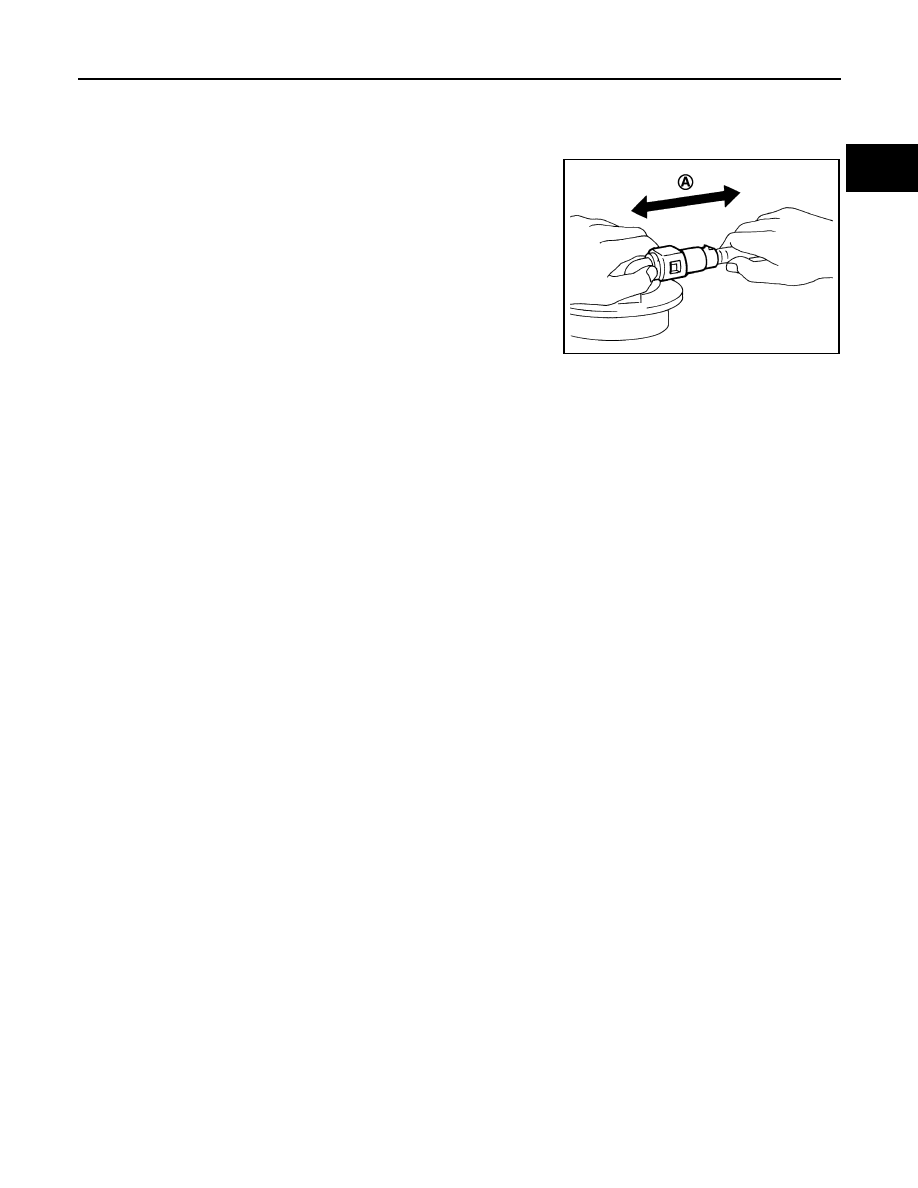Nissan Qashqai J11. Manual - part 566

FUEL LEVEL SENSOR UNIT, FUEL FILTER AND FUEL PUMP ASSEMBLY
FL-9
< REMOVAL AND INSTALLATION >
[HRA2DDT]
C
D
E
F
G
H
I
J
K
L
M
A
FL
N
P
O
2.
Align the connector with the tube, then insert the connector straight into the tube until a “click” sound is
heard.
3.
After connecting, check that the connection is secured with following procedures.
• Visually confirm that the two tabs are connected to the connector.
• Pull (A) the tube and the connector to check that they are
securely connected.
4.
Reattach harness connector.
Inspection
INFOID:0000000010418981
INSPECTION AFTER INSTALLATION
Use the following procedure to check for fuel leaks.
1.
Turn ignition switch “ON” (with engine stopped), then check connections for leaks by applying fuel pres-
sure to fuel piping.
2.
Start engine and let it idle and make sure there are no fuel leaks at the fuel system connections.
JPBIA0140ZZ